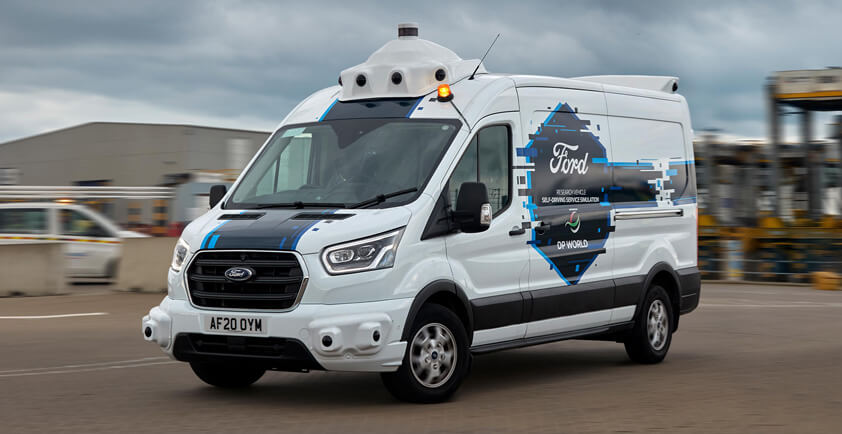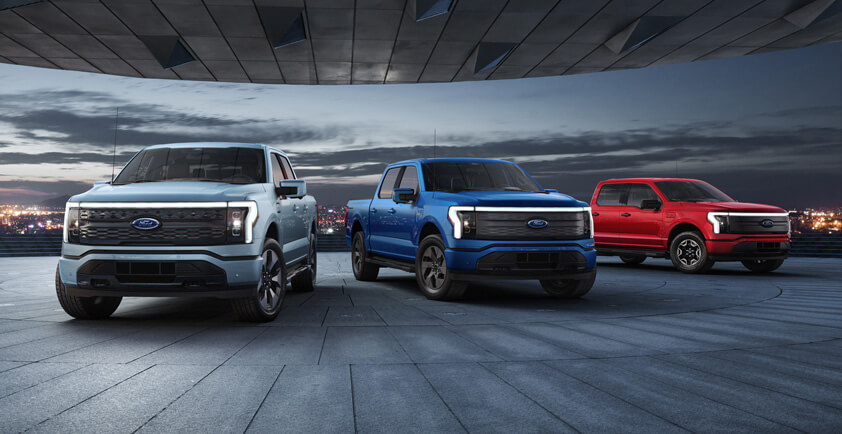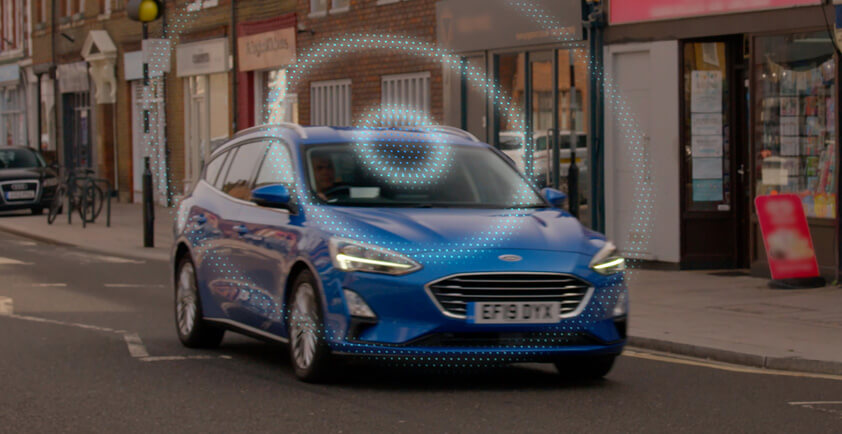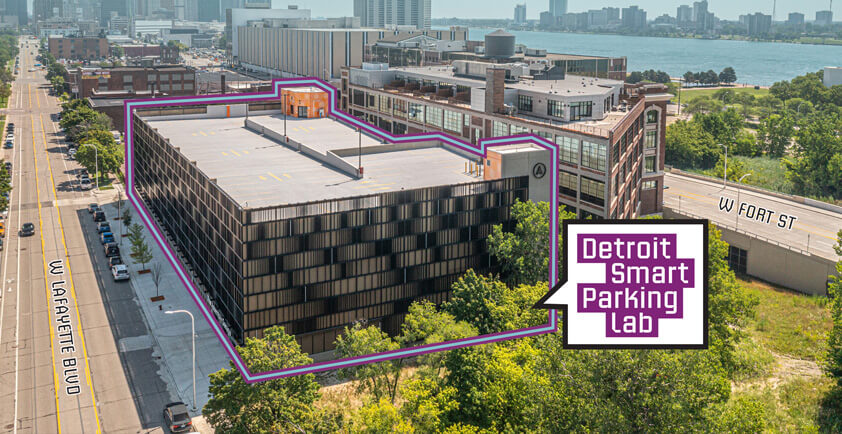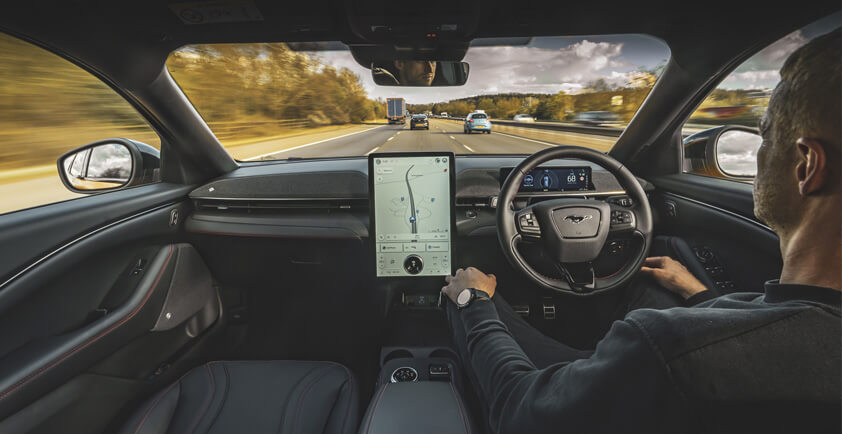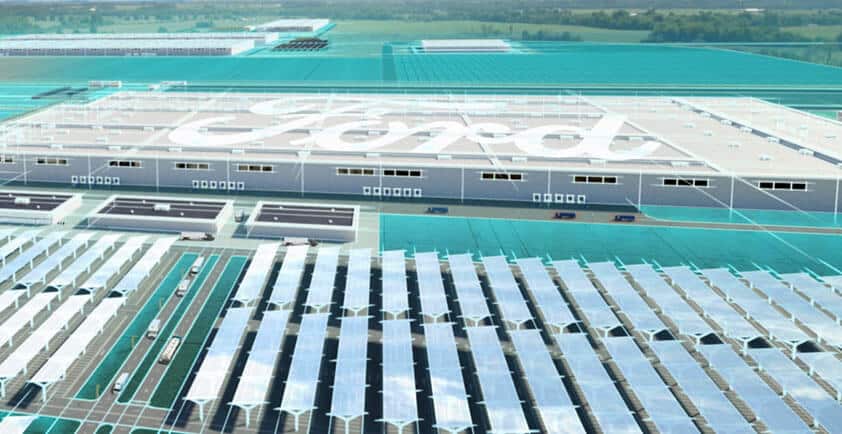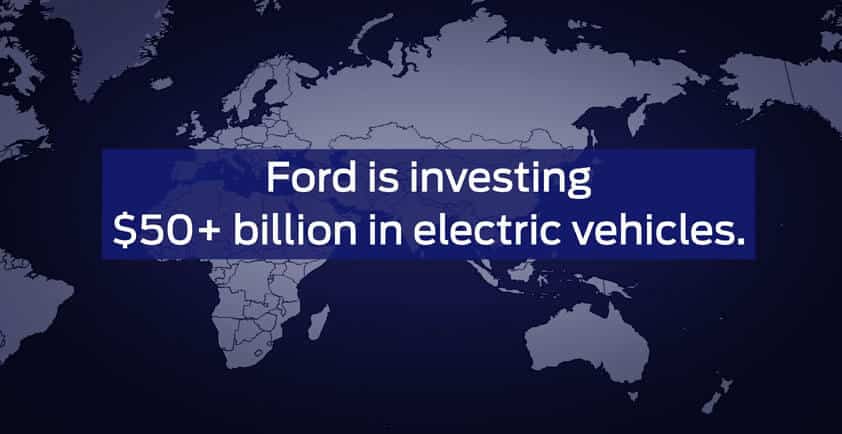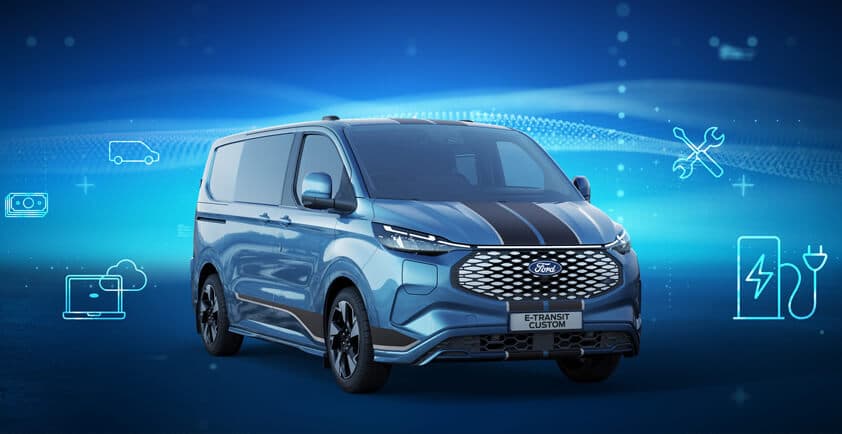
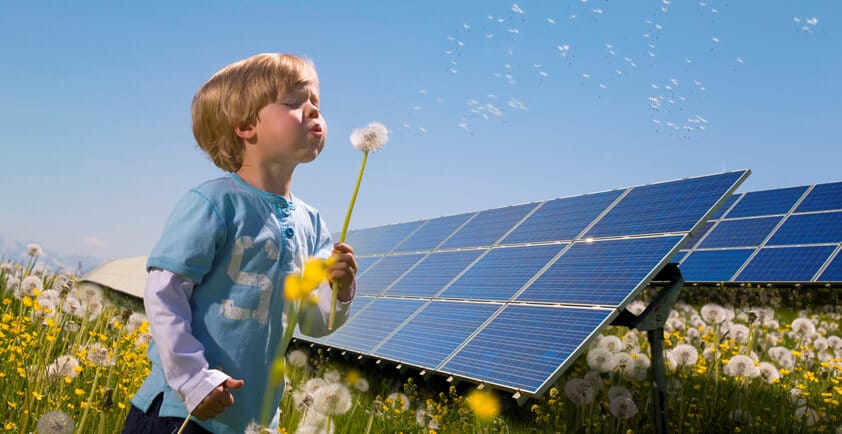
FORD MOTOR COMPANY AND DTE ENERGY ANNOUNCE THE LARGEST RENEWABLE ENERGY PURCHASE FROM A UTILITY IN U.S. HISTORY
>> Through its MIGreenPower program, DTE to add 650 megawatts of new solar energy in Michigan for Ford, increasing the total amount of installed solar in Michigan by nearly 70%
>> By 2025, every Ford vehicle manufactured in Michigan will be assembled with the equivalent of 100% carbon-free electricity, 10 years earlier than Ford’s global goal
>> Ford’s purchase of carbon-free electricity will avoid as much as 600,000 tons of carbon dioxide emissions annually
DETROIT — Through a new clean energy agreement with DTE Energy, Ford Motor Company will soon be able to attribute all its electricity supply in Michigan to clean energy, a major step toward Ford’s goal to reach carbon neutrality. As part of the new agreement announced today, DTE will add 650 megawatts of new solar energy capacity in Michigan for Ford by 2025. The purchase is a strategic investment in Michigan through DTE’s MIGreenPower program and is the largest renewable energy purchase ever made in the U.S. from a utility.* According to data collected by the Solar Energy Industries Association, once installed, the arrays will increase the total amount of installed solar energy in Michigan by nearly 70%.
"This unprecedented agreement is all about a greener and brighter future for Ford and for Michigan," said Jim Farley, president and CEO, Ford Motor Company. "Today is an example of what it looks like to lead… to turn talk into action."
Since 2009, DTE’s investments in renewable energy have created more than 4,000 Michigan jobs. DTE estimates that the construction of the solar arrays will create 250 temporary jobs and 10 permanent jobs. Local communities that host DTE’s renewable energy projects also benefit from the additional tax revenue these projects generate. This revenue can be used for community support services including roads, schools, libraries and first responders.
"We want to congratulate Ford Motor Company for its environmental leadership and commitment to clean energy," said Jerry Norcia, chairman and CEO, DTE Energy. "Ford was the first large industrial customer to enroll in our MIGreenPower program in 2019 and we thank Ford for its continued commitment to using MIGreenPower to help decarbonize its operations and meet its sustainability goals."
Ford is purchasing carbon-free electricity through DTE’s MIGreenPower program, which is among the largest voluntary renewable energy programs in the country. To date, the company has more than 600 businesses enrolled in the program along with more than 62,000 residential customers. On an annual basis, MIGreenPower customers have enrolled 2.8 million megawatt hours of clean energy in the program, which has the environmental benefit equivalent to avoiding 2.2 million tons of carbon dioxide emissions. DTE is Michigan’s largest producer of renewable energy and the company plans to add thousands of megawatts of new clean energy projects to support the program.

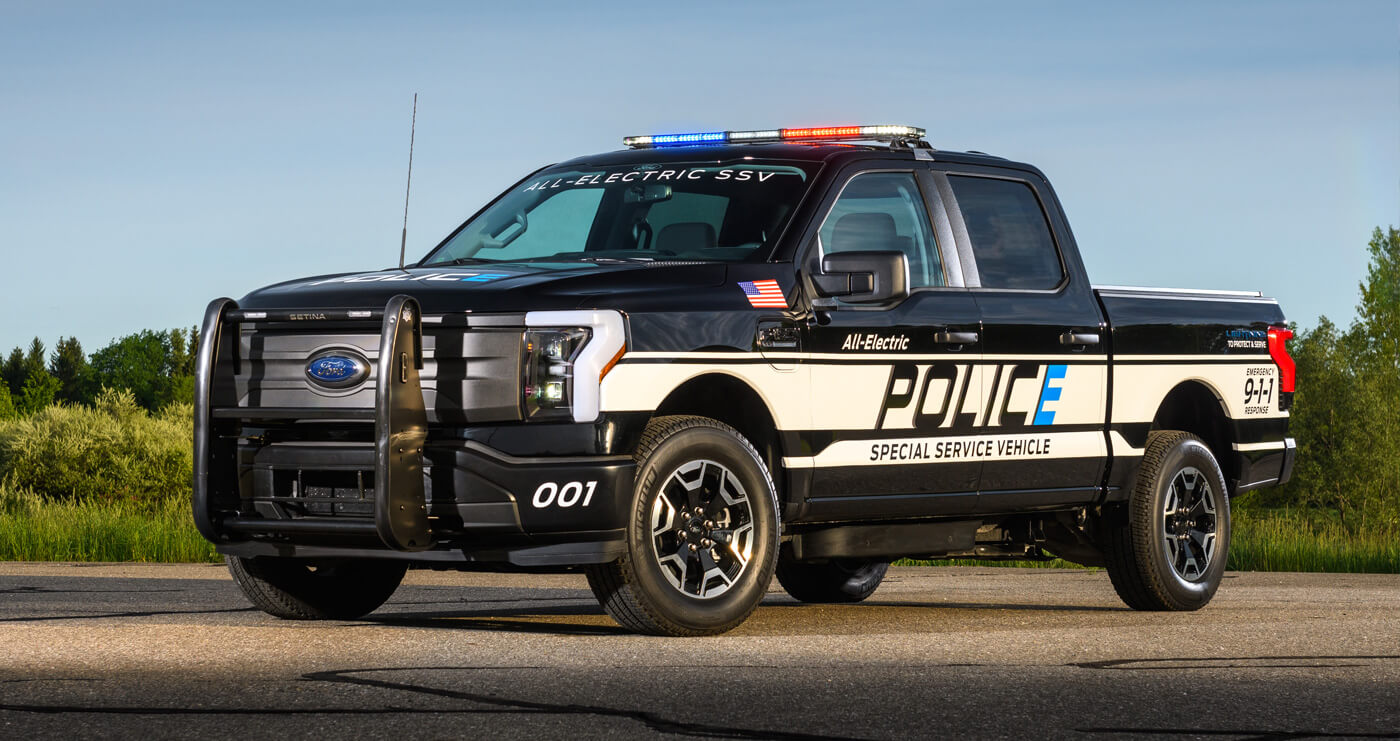
FORD UNVEILS AMERICA’S FIRST ELECTRIC PICKUP TRUCK PURPOSE-BUILT FOR POLICE: 2023 FORD F-150 LIGHTNING PRO SSV
DEARBORN – Ford Pro™ continues to help guide cities into an electrified, software-driven world with the launch of America’s first electric pickup truck purpose-built for police: the 2023 Ford F-150® Lightning™ Pro Special Service Vehicle.
Ford has been providing police departments with the vehicles they need to protect and serve communities for more than 70 years. Currently, Ford Pro customers include more than 12,000 police departments across the country and its police vehicle lineup outsells all other police vehicles combined1. The company attributes this success and customer loyalty to the automaker’s close collaboration with its customers, specifically the Ford Police Advisory Board.
"We're proud to offer America’s first electric police pickup truck to local government customers who can use the truck’s game-changing technology to help improve their productivity," said Nate Oscarson, Ford Pro national government sales manager. "Pro Power Onboard can serve as a mobile power source2 to light up evening accident scenes on the highway, the electric powertrain helps to potentially reduce costs associated with fuel and scheduled maintenance needs3 and the Mega Power Frunk provides extra lockable storage on top of purpose-built police additions our customers have come to expect from the leader in police vehicles."
An intelligent electric truck purpose-built for police
The 2023 Ford F-150 Lightning Pro SSV blends familiar Built Ford Tough® power and performance, including available sub-four-second 0-60 mph acceleration capabilities4, with the vehicle’s high-tech electric platform and innovation with Ford Pro’s real-time software and support.
The F-150 Lightning Pro SSV is designed to handle specialized departmental needs outside of pursuit situations, such as assisting at an accident or crime scene or giving departments the ability to tow a boat or trailer. Purpose-built features from F-150 Police Responder® include:
> Police-grade heavy-duty cloth seats with reduced bolsters to help holstered officers enter and exit the vehicle more easily
> Built-in steel intrusion plates in the front seatbacks.
> Available red/blue, amber/white roof-mounted LED warning beacons
> An upfit-friendly reinforced instrument panel top tray for easy mounting of police equipment
> Easy-to-clean vinyl rear seats and vinyl flooring
Accelerating productivity and sustainability with the Ford Pro platform
As part of Ford Pro’s platform of connected vehicles, software and services, the targeted zero-emissions9 police truck comes pre-configured to seamlessly connect to a department’s existing fleet of Ford and non-Ford internal combustion engine and battery-electric vehicles, chargers, and fleet management software. When used together, police departments can proactively manage when vehicles are charged and serviced, resulting in potentially lower operating costs and improved uptime.
Ford Pro SSV customers also benefit from access to the following:
> Available Ford E-Telematics™10 which delivers manufacturer-grade information, insights and solutions on potential solutions on fuel management, vehicle health and more
> Established network of more than 650 electric vehicle-certified Ford Commercial Vehicle Centers across the United States, offering sales, service, financing and charging solutions, as well as 2,300 Ford electric vehicle-certified dealers.
> Consultative services related to charging installation and operation, data management and digital services
> Ford Pro™, through its commercial lending arm FinSimple™, offers flexible financing options for municipalities for vehicles as well as for charging solutions including depot installation, hardware and software to assist in the transition to electrified fleets
> Ford Pro’s Body Builder Advisory Service – a complimentary resource with guides and the latest information on how to add specialty tools and aftermarket equipment
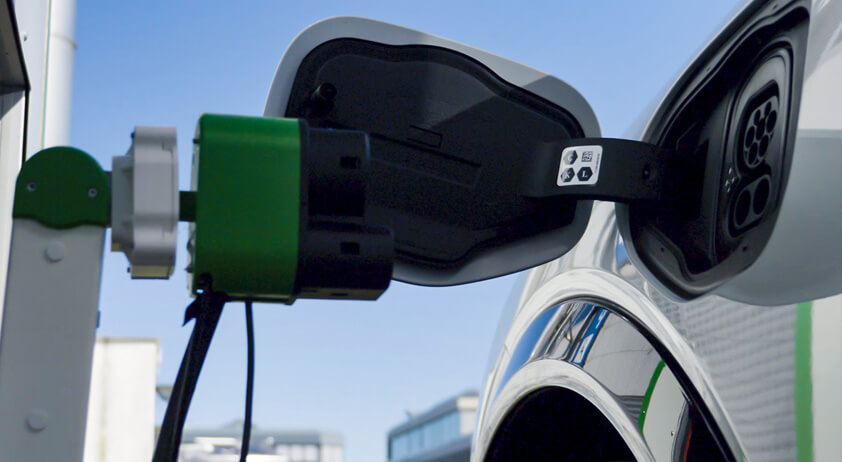

FORD TRIALS ROBOT CHARGING STATION DESIGNED TO GIVE DISABLED DRIVERS A MUCH NEEDED HELPING HAND
For most of us, filling a car with fuel, or charging an electric vehicle is a simple task. But for disabled drivers, people with reduced mobility and older people it can be a significant challenge.
Now, Ford has developed a prototype robot charging station that drivers operate via their smartphone from inside their electric vehicle. The technology could enable disabled drivers to stay in the car while charging, or they could leave the car while the robot does all the work.
Disabled drivers have already identified ease of charging as a key purchase consideration for electric vehicles. Ford is testing the robot charging station as part of a research project to develop hands-free charging solutions for electric vehicles and fully automatic charging for autonomous vehicles.
Following initial lab testing, Ford researchers are now putting the robot charging station to the test in real-life situations. Once activated, the station cover slides open and the charging arm extends towards the inlet with the help of a tiny camera. For the trial, drivers were able to monitor the charge status via the FordPass app. After charging, the arm retracts back into place.
In future, the robot charging station, custom-made by Dortmund University, in Germany, could be installed at disabled parking spaces, in car parks or at private homes. Further applications could include fast and efficient charging of company fleets. The technology could also support more powerful charging to charge vehicles in a much shorter time.
Looking ahead, the process could become fully automated, with minimal or no driver involvement. The driver would simply send the vehicle to the charging station, with the infrastructure ensuring it reaches and returns from its destination autonomously.
On the road to electrification
This research project complements Ford’s commitment to electrification. A follow-up project with the charging network provider IONITY will look to further improve the robot charging station.
Ford is also researching into robot charging solutions in combination with Automated Valet Parking, as demonstrated at IAA in Munich, Germany, last year.
Ford’s fast-growing Blue Oval Charging Network provides customers with access to a network of over 300,000 chargers across Europe. To help drivers find charging stations and pay for charging, Ford Charge Assist can be accessed using the touchscreen of Ford’s SYNC 4 connectivity and entertainment system.
For commercial vehicle customers, Ford Pro Charging offers bespoke charging solutions incorporating charging equipment, ongoing maintenance and management software that help reduce time-consuming paperwork and charge schedule planning.
Ford recently joined 27 companies in a petition to ensure all new cars and vans in Europe are zero emission from 2035 and called for targets to grow electric vehicle charging infrastructure in Europe to keep pace with electric vehicle growth rates.
The company believes a unified approach encompassing governments, European Union institutions, the entire auto industry, energy providers, local authorities and consumers is required to accelerate the development of a comprehensive, easily accessible and efficient charging infrastructure at home, in the workplace and in public locations
